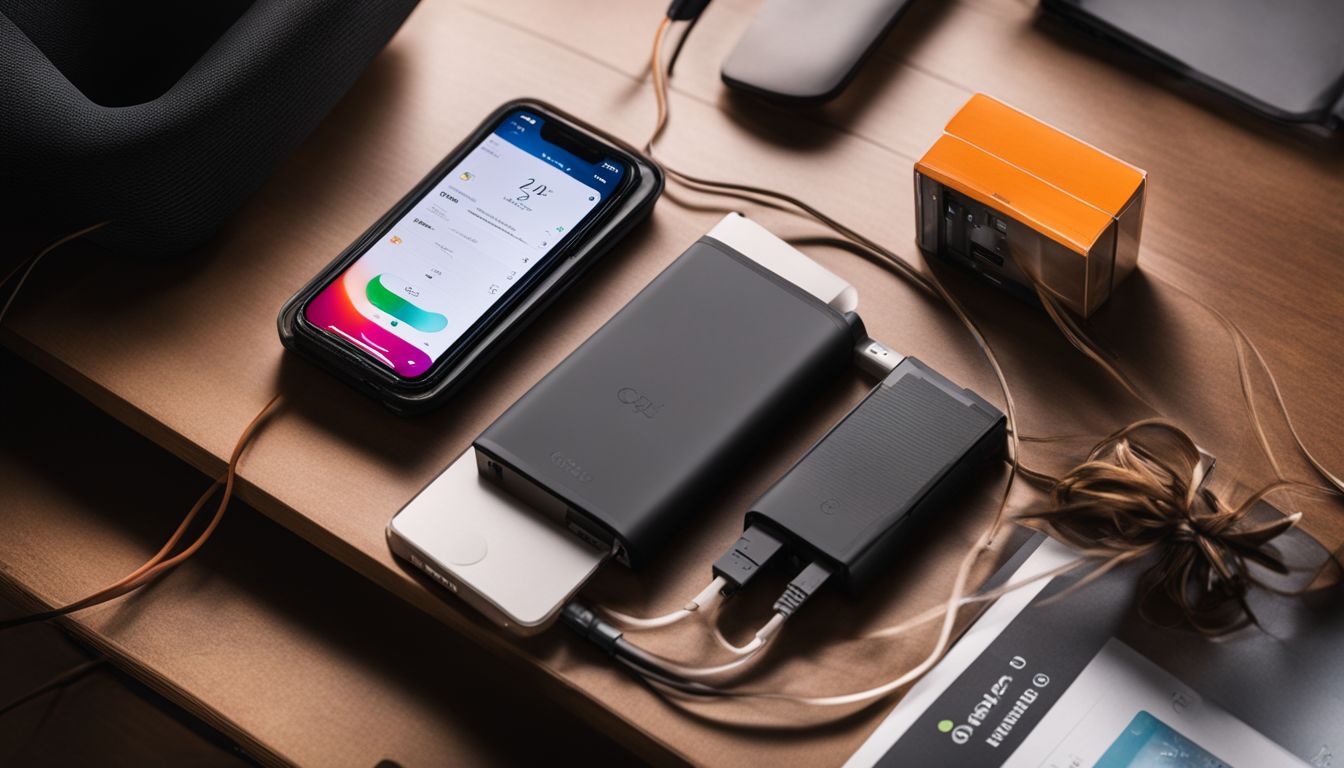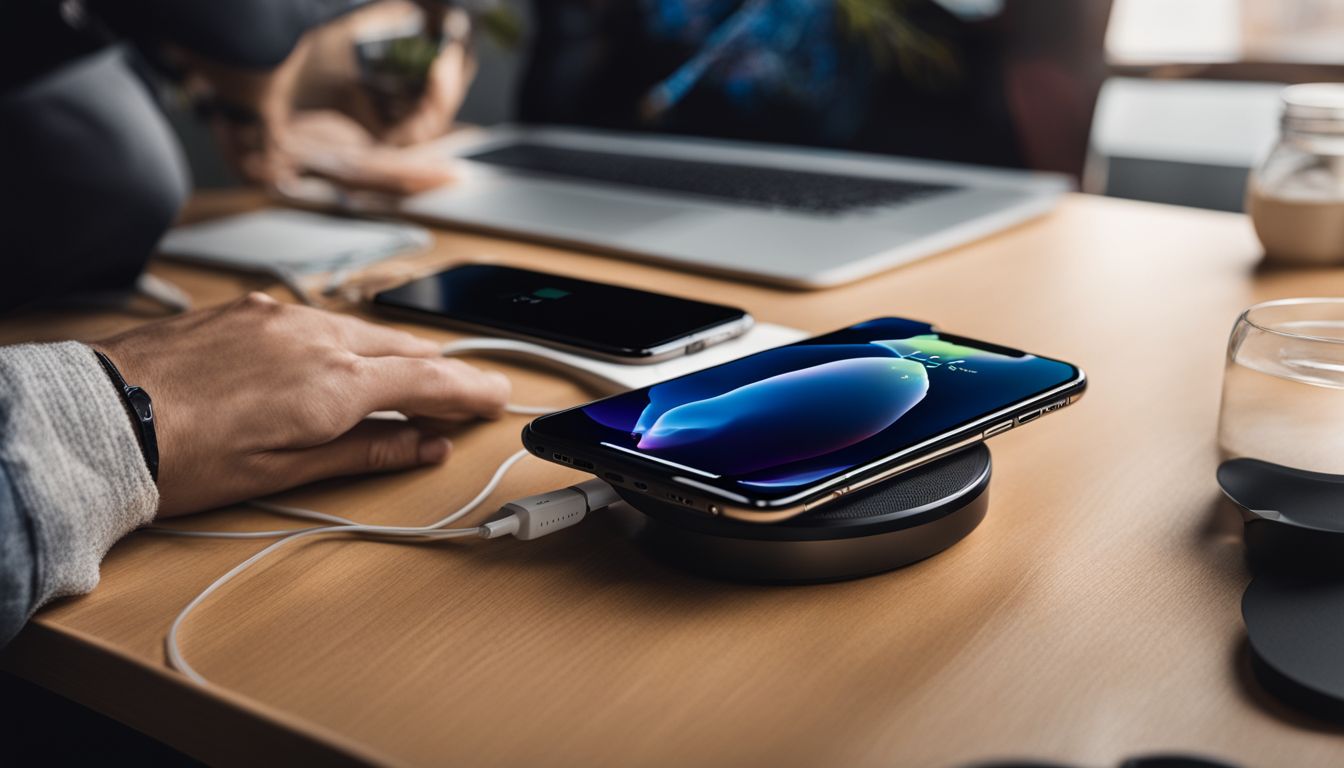You’ve noticed your iPhone battery doesn’t last as long as it used to and wonder if fast wireless charging is the culprit. Fast charging can boost your iPhone’s battery from 0 to 50% in just 30 minutes.
This article explores how fast wireless charging impacts battery health, offering insights into whether it’s a smart choice for your device. Ready to find out?
How Fast Charging Works?
Fast charging can fill your iPhone’s battery quicker, but it might make the battery wear out faster. Using fast chargers often could shorten how long your phone stays charged over time.

Fast charging sends more power (measured in watts) to your iPhone battery, making it charge faster than using a regular charger. For example, while a standard 5w charger might take a while, using a 20w charger fills up your phone much quicker.
https://www.youtube.com/watch?v=s9LWamZoW0s
This is because the fast charger moves more electricity into your iPhone’s battery in less time. Your iPhone is smart enough to handle this increased power safely without harming the battery. But keep an eye on heat buildup; too much heat during charging can be bad for your iPhone’s battery health.
Fast chargers like those at 10w or even up to 20w are made for iPhones and ensure that you can charge faster without worrying about damage.
Fast Wireless Charging: Pros

Fast wireless charging gives iPhone users the power to juice up their devices quickly without fiddling with cables. This feature offers a blend of speed and convenience, making life easier for those always on the go.
Read Also: Xiaomi 15 Ultra Global Review: Faster Charging Speeds
Convenience
Charging your iPhone wirelessly is all about convenience. You don’t need to fumble with cables or make sure you have the right charging cable. Just drop your iPhone or Airpods charging case on a wireless charging pad, and it starts charging.
It’s perfect for a quick charge at your desk or overnight by your bed. Whether you use an iPhone 8, iPhone 12, or the latest iPhone 15, wireless chargers work smoothly.
The best way to charge your iPhone? Simply lay it down.
Wireless charging pads are designed to be sleeker and fit anywhere in your home or office. Companies like Anker, Belkin, and those that offer Qi-certified products have made sure their devices are easy to use and compatible with multiple Apple devices including AirPods.
Imagine not having to switch between USB-A, USB-C, or Lightning cables because one pad powers them all—now that’s handy!
You May Like: Smart Ways To Fix White Lines On iPhone Screen
Speed Of Charging
Fast wireless charging gets your iPhone powered up faster than slow charging. If you use a 20w wireless charger instead of a 10w, your phone charges quicker. This means less time waiting around for your iPhone to charge and more time using it.
For busy folks, this is a big win.
Keep in mind that the heat generated during fast charging can be bad for battery health over time. It’s like running a marathon in the desert; sure, you’re going fast, but it might not be great for you in the long run.
To help preserve battery life, consider using a Made for iPhone certified charger and don’t leave your phone on the charger overnight every night.
Fast Wireless Charging: Cons
Charging your iPhone with a wireless charger is super handy, especially if you have the latest models like the iPhone 14 or iPhone 15 Pro Max. But here’s something you might want to know: using a fast-charging feature can affect how long your battery lasts.
If you constantly use a 10W or 15W wireless charger to juice up your device quickly, it could lead to battery degradation over time. This means your iPhone’s battery might not hold a charge as well as it used to.
From my own experience, I noticed that my iPhone 13 started needing more frequent charges after consistently using a Qi wireless charger at high speeds. The convenience was great, but it seemed like the battery’s health began to decline faster than expected.
To keep your phone running longer between charges, sometimes slower charging overnight with a cable or using an Apple-certified MagSafe charger might be the smarter move for preserving those precious battery cycles.
Remember When Using Fast Charger
Check if your iPhone and charger match up right. Always use the charger in a cool, dry spot to keep your battery happy.
You May Like: Tips To Protect Your Windows Laptop’s Battery Life
Compatibility With iPhone Models
Fast chargers are a game-changer, but not every iPhone can handle them. Your iPhone needs to support Qi wireless charging to use a wireless charger. This feature started with the iPhone 8 and upwards.
Now, for those who can use them, choosing the right wattage is crucial. iPhones support up to 7.5w for fast charging through Qi chargers, and 15w with Magsafe. Going over that won’t speed things up and might even harm your battery in the long run.
I once used a 15w charger thinking it would charge my XR faster but learned quickly that more power doesn’t mean quicker charging; it stayed within safe limits thanks to Apple’s smart design but didn’t add any extra speed to the process.
Maintaining Battery Health
Keeping your iPhone’s battery healthy might seem like a puzzle, but it’s easier than you think. Here are tips straight from someone who learned the hard way so you don’t have to:
- Use the right adapter and cable: Stick to using an Apple-certified wireless charger for your iPhone. Mixing brands can harm the battery.
- Avoid charging overnight: Charging your iPhone all night might be convenient, but it can reduce battery lifespan. Instead, charge it during the day when you can unplug it once full.
- Keep your iPhone cool: Heat is bad news for batteries. Don’t leave your phone in direct sunlight or in a hot car while charging.
- Update iOS regularly: Apple often includes battery performance improvements in updates. Keeping your OS up-to-date can help extend battery life.
- Don’t wait for 0% to charge: Letting your iPhone die repeatedly before charging can damage the battery over time. Try keeping your phone between 20% and 80%.
- Use Low Power Mode: When you don’t need every app running at full speed, switch on Low Power Mode under Settings > Battery. It saves energy and extends your battery’s health.
- Manage app usage: Some apps drain more power than others, especially if they use location services or run in the background. Close unnecessary apps to help preserve battery life.
- Keep an eye on battery health: Check out Settings > Battery > Battery Health to see if your iPhone’s battery is performing well or if it might need servicing.
Conclusion
Fast wireless charging for your iPhone seems great at first glance. It gets your phone powered up quickly and keeps you moving. But, take care to match the right charger with your device and follow best practices to keep your battery healthy longer.

